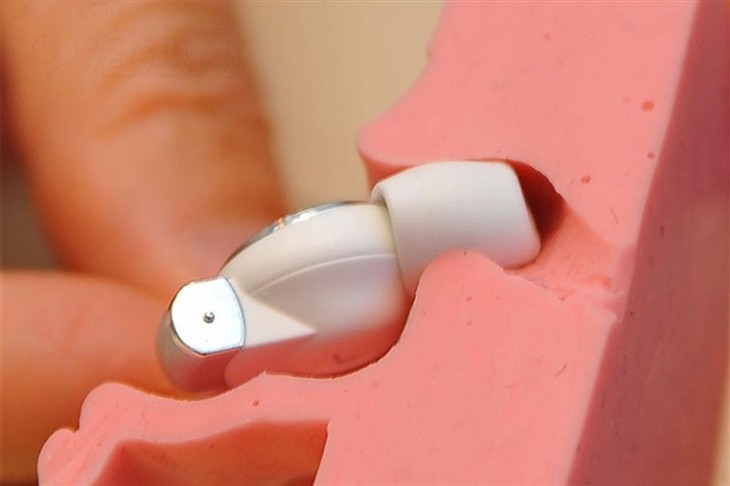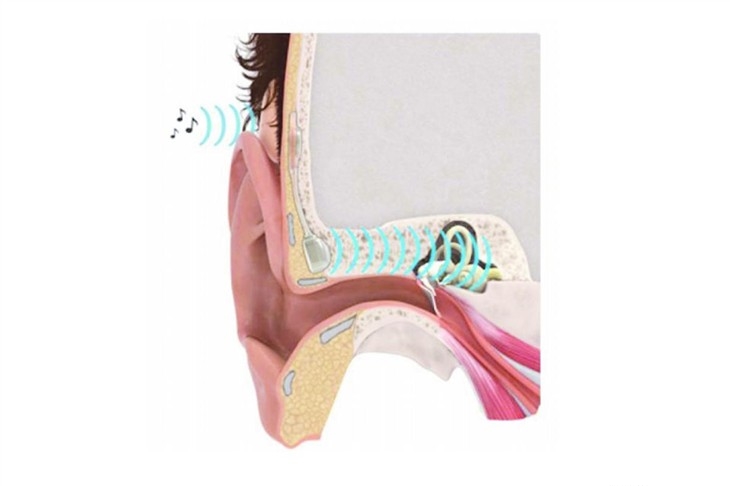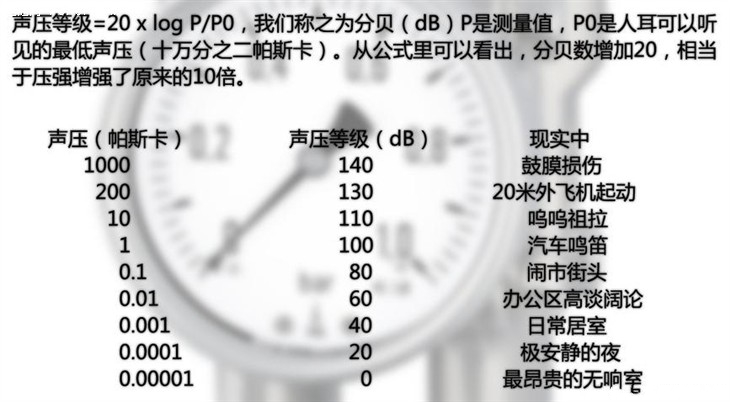Headphones are now a must-have item for office workers. Every day on the way to and from work, there is a clock around the earphone, but very few people know that long-term development of such habits is easy to damage hearing. of.
Long-term exposure of the ear to a noise environment of more than 80 dB(A) will rapidly increase the risk of high-frequency hearing damage to the ear. Noise-induced deafness may occur (Literature: Otorhinolaryngology, published by the Concord Medical University of China). Through various documents, we can see that with the increase in the use of portable music players and headsets in recent decades, the hearing loss of young people and the probability of ear diseases are actually increasing. If you use earphones to listen to music, you have caused youth The decline in human hearing is indeed indisputable. Does that mean that we should forbid the use of headphones to listen to music?
What kind of international joke, how could it not be used?

Among the various literatures about listening to music that cause hearing impairment, there are two frequently-presented sentences that are “excessive sound intensity†and “listening to music for a long timeâ€. Therefore, this is “person†and “objectâ€. In the author's opinion, the vast majority of items themselves will not cause any harm to people. The source of all injuries is how the person uses this “materialâ€.
Therefore, after reading a large amount of data, the author's conclusion is also very clear: the main reason for hearing loss caused by headphones listening to music is "users lack ear health knowledge and bad habits."
Headphone volume, headphone type and hearing impairment
Expert A said:
"People who need to wear headphones for a long time are advised to choose a headset because the in-ear earplugs are plugged directly into the external auditory canal, and the sounds are not sourced. They are all sent to the tympanic membrane. The sounds are all received by the tympanic membrane and the sound contact area is small. The tympanic membrane pressure will be relatively large, and therefore it will be more likely to cause damage to the hearing; and the headset is covered on the ear, the contact area is large, the sound can be transmitted through the skull in addition to the air, so in the When you hear the same volume, the pressure on the tympanic membrane will be relatively small, and the stimulation of the cochlear cilia cells will be relatively small, so it is certainly safer to use.â€

The author commented:
Well, in fact, the above point of view was summarized by the author, because many experts say that the words are not accurate enough... Yes, from the perspective of listening structure, in-ear ear plugs will form a closed cavity space because they are inserted into the ear canal. Most of the sound waves will be absorbed by the tympanic membrane after reflection. Subjectively, it may actually cause more damage. In contrast, headsets, in addition to vibrating the tympanic membrane, also vibrate tissue around the ear canal to transmit sound (this This is why even if you block your ears, you can still hear the sound, so you can achieve the same listening effects as the earbuds at low volume.

If you think about it, you can actually find out that this kind of view is actually based on a "quiet use environment." When we listen to music, if we want to hear the details of the music, then it requires the headset to make a sound that's better than the surrounding. The ambient noise is about 20 decibels high, and the noise in the indoor environment in our daily life is generally about 40-60 decibels. This requires that the sound from the headphones be 60-80 dB, if the internationally recognized 85 decibels is safe and secure. From the demarcation point of damage, in this noise environment, basically any headset will not cause damage to the hearing, and the headset can adjust the volume to be lower because it transmits more sounds, so it sounds It's more comfortable.

Pick headphones suggestions:
If you use headphones in the room, you can try to choose a large head-mounted headset. If there is no other person in the environment (that is, there is no disturbing problem), you can choose to open or semi-open, because the sound of these headphones is not only Sending it in the direction of the ear will also be sent to the external environment. This will bring benefits not only to make the sound tune smaller to meet the need of hearing protection, but also because the sound will have to be sent to the environment, so your left ear is also Can hear the sound of the right side unit of the earphone, the right ear can also hear the sound of the left side unit of the earphone, this kind of listening effect is closer to the placement of the 2.0 sound box, so the sound image force will be clearer and the sense of positioning More accurate, the sound field is more natural.
And if you are using it in a colleague’s office around you, it is recommended to use a headset with a closed large headset that is safer than in-ear security and will not quarrel with colleagues.
Of course, the disadvantage of headsets is that they are heavy, and they can hold down the hair. In the long-term wear, there will be sweltering. Therefore, the use of flat-type earbuds or in-ear earbuds is completely fine, as long as you adjust the volume to 85dB. Within it, there is nothing wrong with it.
Expert B said:
"In-ear earphones are less damaging to hearing than flat-headed earphones or headphones that damage hearing. Under the same external environmental conditions, the general flat-headed earbuds are 5-8 decibels in noise, and head-mounted large headphones are The sound insulation is about 15 decibels, and the in-ear earbuds have an acoustic isolation of about 20 decibels, and the tailored earplugs can achieve an acoustical effect of about 30 decibels. Therefore, in order to achieve the same listening volume, the in-ear earbuds have better soundproofing effects. Therefore, the volume needed is also small."

The author reviews:
B. This point of view of course is also the author's summary... I'm doing my own rhythm with myself... because I have also seen some practical data showing that the proportion of hearing loss caused by using earplugs is greater than Headphones, however, all reports did not mention in-ear or flat-type earbuds, nor did they explain the environment in which they might be used. It may be that people simply do a hearing impairment survey.

As Expert B said, flat-headed earbuds are generally soundproofed, so the emitted sound is more likely to be disturbed by environmental noises, such as in noisy public places, bus and subway rides, etc., in order to be able to cover the surrounding sounds. To be more clear, people will unconsciously adjust the volume to amplify the volume. The noise in the subway is 80-100 decibels. If you want to use a flat-headed earplug to hear the music, the volume should be at least 90 decibels or more. In daily life, whether it is on the bus, in the subway, or on the road, I believe we all have seen many people wearing earplugs and listening to music. Many of them often adjust their voices so much that they People can hear particularly clearly, so that long-term loud sound stimulation will give irreversible hearing damage, and even lead to inflammation.
Therefore, the in-ear earplugs are more suitable for "noisy use environment", it not only can block the impact of environmental noise on hearing, but also can listen to the music at the lowest volume, to achieve the protection of hearing. Of course, some people wearing in-ear earbuds will have a foreign body sensation, then you can choose a closed headset, and the current major brands have noise-reducing headphone models, can better achieve the protection of hearing. (Active noise reduction itself is also a kind of noise, some people can not adapt)
Well, the relationship between earphone volume, earphone type and hearing impairment is basically the same, so let's talk about listening time again!
Expert A said:
"People who often wear headphones to listen to music should master a "60-60 principle", which is also a relatively internationally recognized method of protecting hearing, that is, when listening to music, the volume should not exceed 60% of the maximum volume, and continuous listening time should not exceed 60 minutes."
Expert B said:
"Do not listen for more than one hour in a row. Do not wear headphones for more than 3-4 hours a day. Minors do not exceed 1-2 hours a day. After 30-40 minutes of wearing your headphones, your ears should be fully rested. ."
The author reviews:
Well, the above point of view the author fully agree, and I do in my life, "long listening to music" is definitely one of the culprits of hearing impairment, but many people do not pay attention to this point, often wearing a headset is several Hours, sometimes worn even when I was sleeping, my name was helpful to sleep (this was also the case when the author was young), but nobody knew that after listening to sleep, the hearing system was not idle and it was still working. The long-term high-decibel noise will inevitably cause damage to the hearing. Therefore, we do not really need to look for a horse to sleep and plug afterwards. It will not only hurt hearing, but it will cause ear congestive congestion in the ear for a long time. Affect blood circulation.
to sum up:
Today's conclusion is very simple, the earphone use suggestion is: According to own use environment chooses the suitable earphone product, as far as possible puts the earphone volume to whisper loudly, and reduces the time which listens to the music for a single time, lets the ear fully rest.
For more information, headset business opportunities, headset purchase, please pay attention to China Headset Trading Network: [/], welcome to use free trial membership trial, contact information
Stretch Bar Display,Stretched Bar Lcd Display,Digital Advertising Screen,Stretch Bar Lcd Display
ALLIN , https://www.displayapio.com